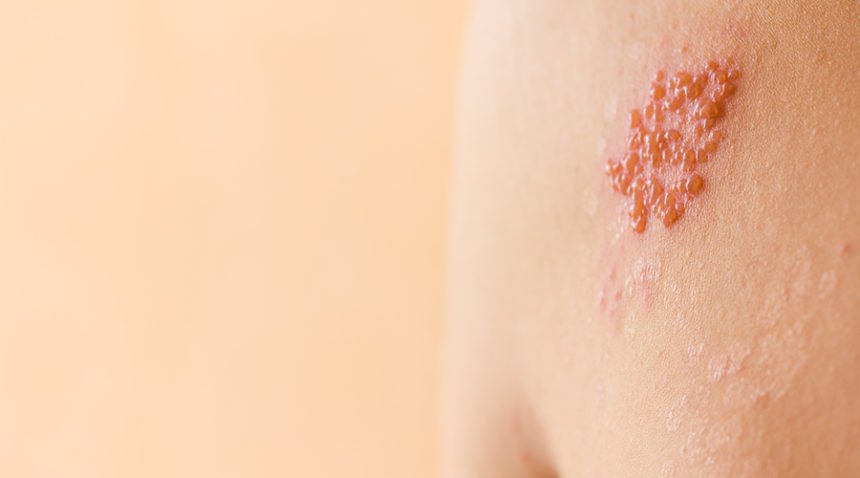For most of us, chickenpox is a long-ago memory. But that childhood affliction can come back to haunt you much later in life, in the form of shingles.
Shingles is a viral infection in the nerves of the skin that causes pain, burning or a tingling sensation, along with an itch and a rash or blisters. The rash or blisters usually last three to 10 days and then fade. It appears on just one side of your body, most commonly around the rib cage or waist, and you may also have a fever, an upset stomach, headaches and chills.
But there’s something you can do to ward off the misery: Adults ages 50 and older should get the vaccine Shingrix to prevent shingles, according to a recommendation by the Centers for Disease Control and Prevention.
We talked to David J. Weber, MD, MPH, an infectious diseases expert at UNC Medical Center, to learn more. Here are five things to understand about shingles.
- Chickenpox causes shingles.
You get shingles when the varicella-zoster virus, which gave you chickenpox when you were young, becomes active again in your body. Doctors don’t know why this happens.
“After you get chickenpox, the virus remains dormant in you, and at some time in later life that virus may reactivate and cause shingles,” Dr. Weber says.
- Your risk of getting shingles goes up after age 50.
About 1 in 3 people in the United States will get shingles, resulting in about 1 million cases a year. While it can happen at any age, you’re more likely to get shingles as you get older because your immune system weakens as you age.
“The older you are, the greater your risk, starting at about age 50,” Dr. Weber says. “By age 85, you have roughly a 50-50 chance of having had shingles, so it’s not so much a matter of if you get it but when you get it.”
You also are at risk if you have a compromised immune system from cancer treatment or other immunosuppressive drugs such as steroids.
- The major risk with shingles is postherpetic neuralgia.
Even after the rash fades, some people will experience severe pain, called postherpetic neuralgia, or PHN, in the areas where the rash occurred. PHN affects the nerve fibers and skin and can last for months. About 10 to 18 percent of people who get shingles will experience PHN. And the risk of it also increases with age.
“At age 60, the risks go up dramatically, and the pain is more severe and lasts longer,” Dr. Weber says.
- The Shingrix vaccine is 90 to 95 percent effective in preventing shingles.
The Shingrix vaccine is given in two doses, two to six months apart, and is recommended for anyone ages 50 and older. You need to receive the vaccine series only once.
“It’s safe in everyone and is 90 to 95 percent effective. So it’s excellent but not perfect,” Dr. Weber says.
The most common side effects of the vaccine are mild to moderate pain and swelling in the arm where the vaccine is administered.
- The CDC preferentially recommends Shingrix over an older vaccine called Zostavax.
Two vaccines are licensed and recommended to prevent shingles in the United States: Zostavax, which has been in use since 2006, and Shingrix, which has been in use since 2017. The CDC recommends Shingrix as the preferred shingles vaccine, Dr. Weber says.
Shingrix is an inactivated form of the virus, which means it is not a live virus and thus can be given to immunocompromised people. Studies have shown that Shingrix is more effective for a longer period than Zostavax.
Zostavax is a live virus, so it cannot be used in immunocompromised people. It is also not recommended until age 60 because protection from this shingles vaccine lasts only about 10 years, Dr. Weber says. So if you have the vaccine before age 60, you may not be protected later in life when your risk for shingles and its complications is higher.
If you think you have shingles or would like to get the Shingrix vaccine, talk to your doctor. If you need a doctor, find one near you.

